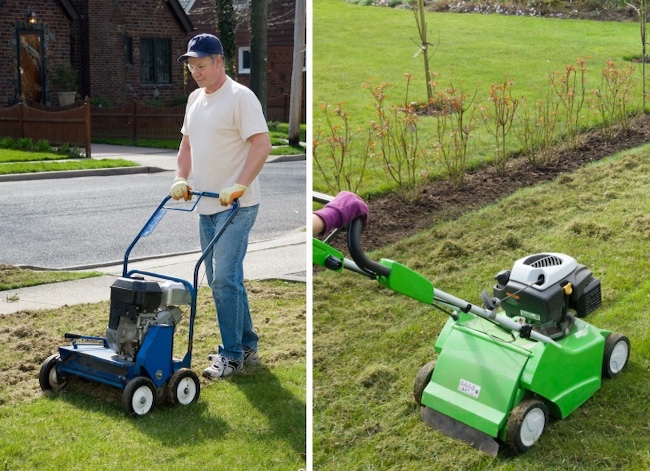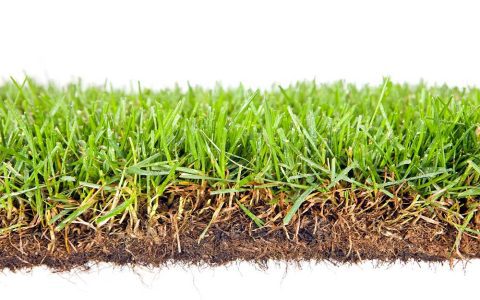Power Rake
A power rake is a robust, motorized machine featuring rotating, knife-like blades or flails. Its primary function is to aggressively remove thick layers of thatch—the dense accumulation of dead grass, roots, and organic debris that builds up between the soil surface and the green vegetation. It can also be used to lightly groove the soil surface, which is beneficial for overseeding.
- Mechanism: Employs strong, vertically-oriented rotating blades (often called flails, scarifying blades, or knives) that cut into the thatch layer and may lightly score the soil.
- Intensity: Generally a more aggressive process, suitable for lawns with substantial thatch buildup (typically more than 1/2 to 3/4 inch).
- Primary Use: Significant thatch removal, breaking up matted debris, and preparing a lawn for overseeding by creating optimal seed-to-soil contact.
Dethatcher
The term "dethatcher" often refers to tools equipped with spring tines or less aggressive fixed tines. These are designed to comb through the grass and pull up looser, lighter thatch. Dethatchers can be manual, tow-behind attachments, or dedicated powered units, generally less aggressive than power rakes.
- Mechanism: Commonly uses flexible spring tines or sometimes less aggressive fixed tines that drag through the lawn to lift out thatch and surface debris.
- Intensity: Less aggressive than power raking. Suitable for light to moderate thatch (generally less than 1/2 inch) or regular lawn maintenance to prevent excessive buildup.
- Primary Use: Removing a thinner layer of thatch and general lawn cleanup without deeply disturbing the soil.
Key Differences Summarized
- Aggressiveness & Thatch Level: Power rakes are more aggressive and designed for thick, compacted thatch. Dethatchers (especially tine-based ones) are gentler and suited for lighter thatch maintenance.
- Blade/Tine Type: Power rakes use robust, cutting blades or flails that penetrate more deeply. Dethatchers commonly use spring tines or simpler fixed tines that comb the surface.
- Soil Interaction: Power rakes are designed to make more significant contact with the thatch layer and can lightly score the soil. Tine dethatchers primarily work on lifting debris from the grass canopy and the very top of the thatch layer.
- Purpose: Power raking is often a more corrective, heavy-duty procedure. Dethatching can be a more routine, preventative maintenance task.
When to Use Which
- Use a Power Rake if: You have a thick, compacted thatch layer (over 1/2 to 3/4 inch) that is impeding water, air, and nutrient flow to the soil, or you are preparing for a significant overseeding project. This is a more intensive renovation task.
- Use a Dethatcher (Tine-based) if: You have a light layer of thatch (less than 1/2 inch) and want to perform routine maintenance to keep it in check and improve lawn health. This is a less stressful process for the lawn.
Important Considerations:

Both power raking and aggressive dethatching can be stressful to a lawn. It's crucial to perform these tasks at the right time of year, typically during active growing seasons (spring or fall for cool-season grasses; late spring/early summer for warm-season grasses), allowing the turf to recover. Ensure the lawn is healthy enough and properly watered before and after the process. Over-aggressive or improperly timed use can cause significant harm to the lawn. A thin layer of thatch (less than 1/2 inch) is actually beneficial for most lawns.










